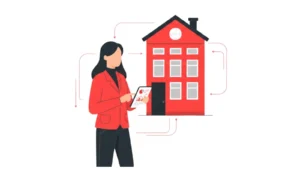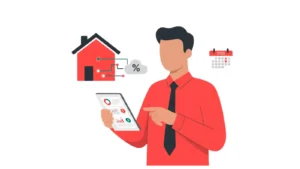Updated : Feb 9, 2025
As a property manager, you must have wrestled with the dilemma: Occupancy vs ADR? Which metric to track and improve for increased revenue? On one side, feeling fully booked looks like success, however, is it resulting in revenue gains if the Average Daily Rate of your vacation rental is low?
Evaluating OR and ADR helps property managers with profitability analysis, strategic planning, revenue management, and competitive benchmarking. Striking a balance between these metrics will attract more guests while improving profit margins for your STR units.
Before we find the winner of the argument Occupancy vs ADR, let’s first understand what each of these mean
What is the Occupancy Rate (OR)?
Occupancy Rate shows the percentage of rented rooms at a specific period. This metric is a key indicator of how often your property is booked over a given period and if you need to boost Airbnb occupancy rate in the future.
The higher occupancy rate means you’ll make more money and can scale your STR portfolio.
Top reasons to calculate your property’s OR:
- Spot seasonal fluctuations in occupancy
- Optimize revenue and marketing strategies
- Adjust nightly rates based on market trends
- Identify opportunities and areas for improvement
For example, a Reddit user sold a two-bedroom unit as a 1-bedroom to get booked more often based on the market demand. This strategy helped the owner improve OR to 90%.
How to Calculate Occupancy Rate?

For example, your vacation rental has six units, but only three were booked in September.
Occupancy Rate = (3 / 6) x 100% = 0.5 or 50%
Hence, your STR property was booked for approximately 50% in September.
What is ADR (Average Daily Rate)?
ADR allows you to calculate the average rental revenue per occupied unit/room during a given period. Simply put, it shows how much you earn per rental on average.
As ADR directly influences occupancy rates and revenue, regularly monitoring this metric helps evaluate your vacation rental’s financial performance.
Top reasons to calculate your property’s ADR:
- Optimize booking prices
- Benchmark against market competitors
- Determine if you’re under or overpricing
- Identify optimal rates for peak and off-peak periods
How to Calculate ADR?

For example, an STR property sold 3 units on September 24th and generated $2,100.
Total Revenue = $2,100
Total Units Sold = 3
ADR = $2,100 / 3 = $700
Hence, each occupied vacation rental unit generated $700 on average per night during that month.
Occupancy vs ADR
Here’s a quick comparison of Occupancy Rate vs ADR metrics for vacation rentals:
| Occupancy Rate (OR) | Average Daily Rate (ADR) |
| Percentage of occupied units over a specific period | The average revenue earned per occupied unit over a specific period |
| Influenced by demand | Influenced by pricing strategies, market conditions, and property positioning |
| Identifies opportunities to increase bookings | Identifies price optimization and revenue potentials |
| Directly impacts revenue potential | Directly impacts profitability |
| Helps evaluate marketing, pricing, and operational strategies | Helps refine dynamic pricing strategies for peak vs. off-peak seasons |
Analyze Your Occupancy and ADR with PriceLabs Report Builder
Effectively analyze the occupancy and ADR of your listing with PriceLabs Report Builder.What's more? You can easily download the reprots to share with owners and investores.
Start Your Free Trial NowHow to Strike Balance Between OR and ADR?
A higher Occupancy Rate is good only if you aren’t undercharging. However, high OR also increases wear and tear on your units, which ultimately boosts expenses and maintenance costs. An STR listing with a high ADR but a low occupancy rate will likely be profitable if you cover expenses.
On the other hand, a high Average Daily Rate means more money for each night occupied. However, OR will drop if a vacation rental’s ADR is too high.
Thus, occupancy and ADR are inversely related. So what’s the solution?
Your main goal to improve your revenue management strategy depends on balancing both metrics. This combination of OR and ADR is called Revenue per available room (RevPAR).
Remember, various factors impact reservations and average Airbnb rental income, including location, seasonal demands, property type, guest experience, amenities, and comp rates. Applying a practical approach that considers market dynamics and external events is necessary.
Use PriceLabs Portfolio Analytics to track performance and find the sweet spot between your vacation rental’s OR and ADR. This vacation rental software allows property managers to target a desired occupancy level by adjusting ADR as per hyper-local market trends, such as vacation rental seasonality demand, upcoming holidays, and comp rates.
Further, the tool’s previous and current year comparison chart provides a detailed revenue report for your STR listing. PriceLabs data reporting tools enable property managers to optimize their promotional and revenue strategies for future bookings. For instance, PriceLabs offers last-minute discounts on unoccupied units based on real-time booking patterns.
Frequently Asked Questions
1. What is ADR multiplied by occupancy rate?
When you multiply ADR by the occupancy rate, you get Revenue Per Available Room (RevPAR). RevPAR considers both the number of units sold and the average revenue per unit. Thus, it’s a more accurate performance indicator of an STR’s revenue potential.
2. What is adjusted occupancy?
Adjusted occupancy excludes non-revenue-generating days to evaluate STR home’s performance. This metric considers specific factors impacting the available inventory, such as owner stays, maintenance, renovations, etc.
Adjusted Occupancy Rate = (Number of Paid Guest Nights / Number of Available Guest Nights) x 100%
3. What is the best occupancy rate for Airbnb?
Ideally, a well-performing STR listing has at least an 80% occupancy rate on Airbnb.
Bottom Line: Balanced Occupancy & ADR Leads to Improved ROI
Occupancy Rate and Average Daily Rate are the lifeblood of any successful vacation rental business. Evaluating these vacation rental KPIs allows property managers to make informed decisions. A balanced strategy that prioritizes high occupancy and optimal pricing ensures better ROI.







